Mount Nun Peak, Ladakh
Nun is a peak in the western Himalayas, located on the India-Pakistan border. It is the highest peak of the Nun Kun massif, and the highest peak in the Union territory of Ladakh, India. It is located in the Zanskar range, and is a popular destination for mountaineers and trekkers. Access to the peak is restricted, and climbing it requires permission from the Indian government. The peak was first climbed in 1913 by a British team led by Martin Conway.
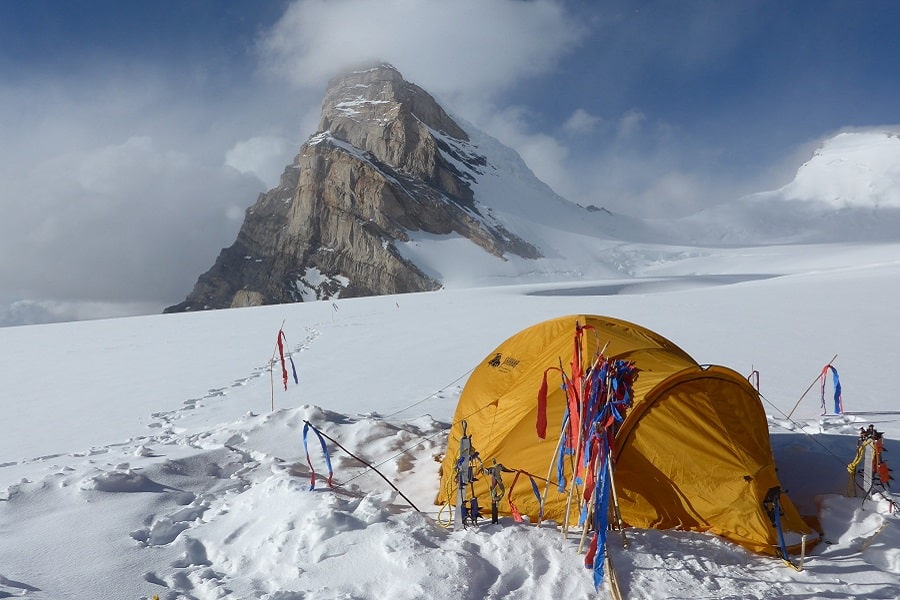
Mount Nun Climbing History
Climbing Mount Nun is considered to be a challenging and demanding experience due to its high elevation, remote location, and harsh weather conditions. The first successful ascent of the peak was made by British mountaineer Bill Tilman in 1936. Since then, many climbers have attempted to summit Mount Nun, and it has become a popular destination for experienced mountaineers.
The climbing route to the summit of Mount Nun is steep and challenging, and requires a high level of physical fitness and technical climbing skills. The climb is usually done as a two- to three-week expedition and involves a combination of trekking and technical climbing. The route includes steep snow and ice slopes, as well as rock and glacier climbing.
Due to its remote location, climbing Mount Nun requires a high degree of preparation and planning, including obtaining permits and hiring a local guide. The best time to attempt the climb is from June to September, when the weather conditions are most favorable.
In recent years, there has been a growing interest in climbing Mount Nun, and it is now considered to be one of the most popular peaks in the Ladakh region. It provides a unique and challenging experience for climbers and offers breathtaking views of the surrounding mountains and valleys.
Location
Nun Peak (7,135 meters) is located in the western Himalayas, in the Indian state of Jammu and Kashmir. It is part of the Zanskar Range and is situated in the Ladakh region, near the border of India and Pakistan. Nun Peak is the highest peak in the Nun-Kun massif, which includes two other peaks, Kun (7,077 meters) and Nun-Kun West (6,173 meters). The massif is located in the Suru Valley, which is accessible from the town of Kargil.
Best Time to Visit
The best time to visit Nun Peak for climbing or trekking is during the summer months of June to September. The weather is generally mild during this time with clear skies and stable temperatures, making it the most favorable time for climbing and trekking. It’s also worth noting that the best time to visit may vary from year to year, depending on the specific weather conditions during that season.
Weather
The weather on Nun Peak can vary greatly depending on the season and the altitude. In general, the best time to climb or trek to the peak is during the summer months of June to September, when the weather is generally mild with clear skies and stable temperatures.
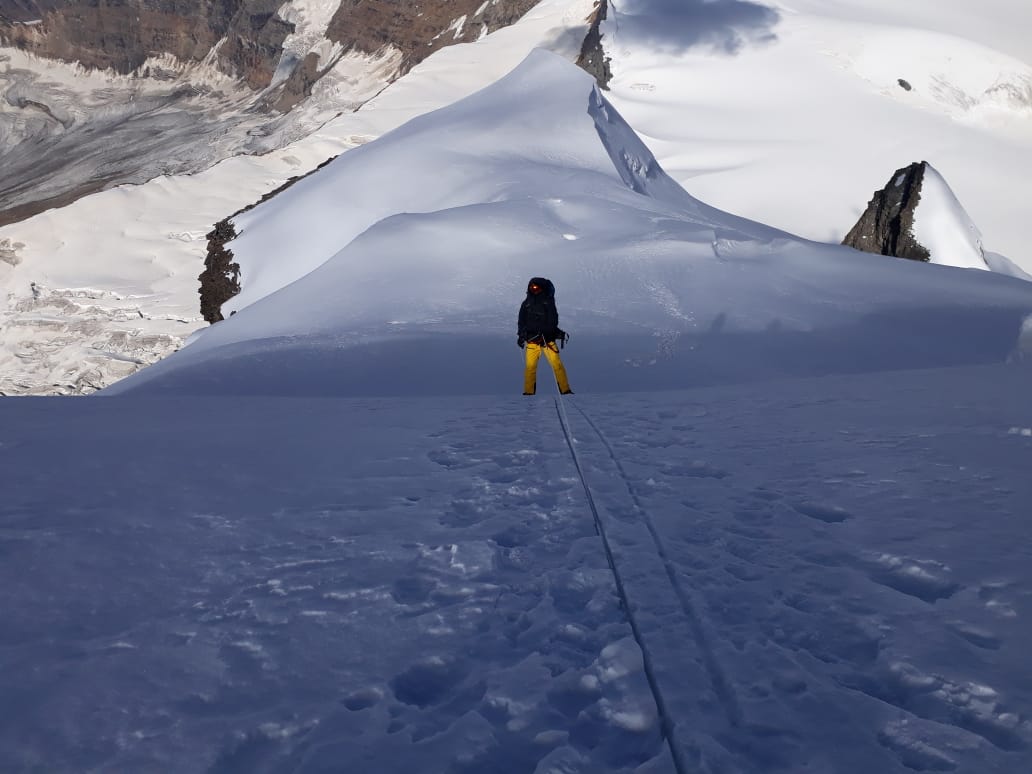
During this time, temperatures at the base camp can range from around freezing at night to around –15 to -20 degrees Celsius during the day. However, temperatures can drop significantly as you gain altitude, and it can be very cold at the summit, with temperatures dropping below -20 degrees Celsius.
The monsoon season in the region runs from mid-July to mid-September, so it’s important to keep in mind that during this time there is a higher chance of rain and snowfall, making it challenging to attempt the peak.
In winter the temperature can drop below -30 degrees Celsius, and the peak is covered by heavy snow, making climbing impossible.
How to Reach
The best way to reach Nun Peak depends on your starting location and mode of transportation. Here are a few options:
By Air: The nearest airport is Leh Airport, which is well connected to major Indian cities. From Leh, you can take a bus or a taxi to Kargil, and then take another bus or taxi to the trailhead at Panikhar.
By Road: You can take a bus or hire a taxi from Srinagar or Leh to Kargil, and then take another bus or taxi to the trailhead at Panikhar. This is a long journey and can take up to 12-15 hours.
By Trek: The trek to Nun Peak starts from Panikhar, which is a small village located in the Zanskar range. The trek is a challenging one, and it takes around 7-8 days to reach the base camp. This is the most popular way to reach the peak for climbers and trekkers.
It’s important to note that access to the peak is restricted, and climbing it requires permission from the Indian government.
Route Map
The route to Nun Peak is a challenging trek that passes through some of the most remote and beautiful regions of the western Himalayas. The trek starts from Panikhar, a small village in the Zanskar range, and goes through various valleys, passes and glaciers before reaching the base camp of the peak.
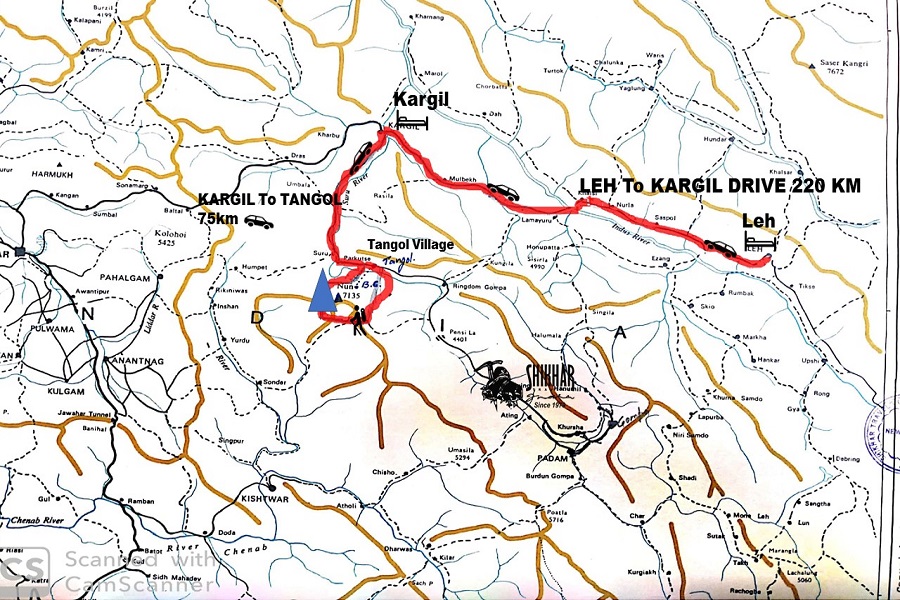
The trek route can be divided into the following stages:
Panikhar to Rangdum: This is the first stage of the trek, and it takes around 4-5 days. The trek passes through beautiful valleys and passes, and offers great views of the surrounding peaks.
Rangdum to Base Camp: This stage takes around 3-4 days, and the trek passes through glaciers and snow-covered passes. The base camp is located at the foot of the peak.
Base Camp to Summit: This is the final stage of the trek, and it takes around 2-3 days. The climb to the summit is technical and challenging, and requires proper equipment and training.
It’s worth noting that the route may vary depending on the season, the weather and the snow conditions, and it’s always best to check with local authorities, guides, and tour operators for the most up-to-date and accurate information before planning a trip.
Things to Carry
When climbing or trekking to Nun Peak, it’s important to be well-prepared and to bring the appropriate gear and equipment. Here are some essential items that you should consider carrying:
Clothing and Footwear: You will need warm and waterproof clothing, including a down jacket, a waterproof jacket and pants, a warm hat and gloves, and good quality hiking boots.
Sleeping and Camping Gear: You will need a good quality sleeping bag, a camping mat, and a tent.
Backpack: A large backpack to carry all of your gear and equipment.
Personal Hygiene and Medical Kit: A personal hygiene kit including a towel, soap, and toilet paper. A basic first aid kit including bandages, pain relievers, and any necessary medications.
Navigation and Communication: A map, compass, and GPS device, as well as a satellite phone or a high-frequency radio for communication.
Lighting: Headlamp or torch with extra batteries.
Food and Water: High-energy snacks, such as trail mix, chocolate, and nuts, as well as enough water to last for the duration of the trek. Water purification tablets or a water filter are also essential.
Climbing equipment: such as crampons, harness, helmet, ice axe, carabiners, slings and ropes.
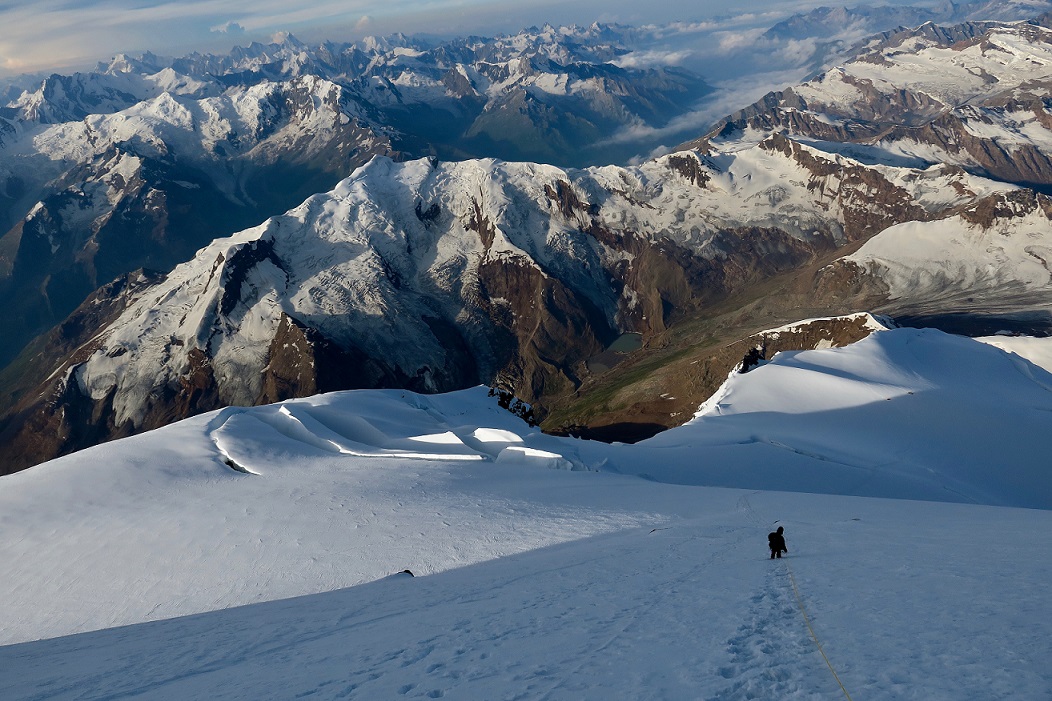
Food Guide
When climbing or trekking to Nun Peak, it’s important to plan your food and nutrition carefully. Here are a few tips to help guide your food choices:
High-energy snacks: Bring high-energy snacks such as trail mix, chocolate, and nuts to keep you going during the climb. These snacks are easy to carry, and provide a quick boost of energy when you need it.
Water: Make sure to bring enough water to last for the duration of the trek. Water purification tablets or a water filter are essential, as there may not be clean drinking water available along the way.
Protein: Pack food that is high in protein, such as nuts, cheese, and dried meat. Protein is essential for maintaining energy levels and repairing muscle tissue.
Carbohydrates: Bring foods that are high in carbohydrates, such as pasta, rice, and bread. Carbohydrates are an important source of energy for the body.
Fresh fruits and vegetables: Fresh fruits and vegetables are not always easy to find on the trek, but if you can bring them, they are a great source of vitamins and minerals.
Avoid heavy and perishable foods: Avoid bringing heavy and perishable foods, as they will be difficult to carry and may spoil during the trek.
Consider hiring a cook: If you’re planning on a long trek or climb, you may want to consider hiring a cook who can prepare your meals for you. This can save you time and energy, and ensure that you have a steady supply of nutritious food.
Place to Visit during Nun Peak Expedition
During a Nun Peak expedition, some popular places to visit include:
Base camp: This is typically located at the base of the mountain and serves as the starting point for the climb.
Advance Base Camp: It is usually located at a higher elevation than base camp and serves as a stopping point for climbers to rest and acclimatize before continuing to the summit.
Camp I: This is typically the first high-altitude camp on the mountain and is located at an elevation of around 6,000 meters.
Camp II: This is the second high-altitude camp and is located at an elevation of around 6,500 meters.
Summit: The final destination of the expedition, which is typically at an elevation of around 7,135 meters for Nun Peak
Descent: After reaching the summit, climbers will typically make their way back down to base camp.
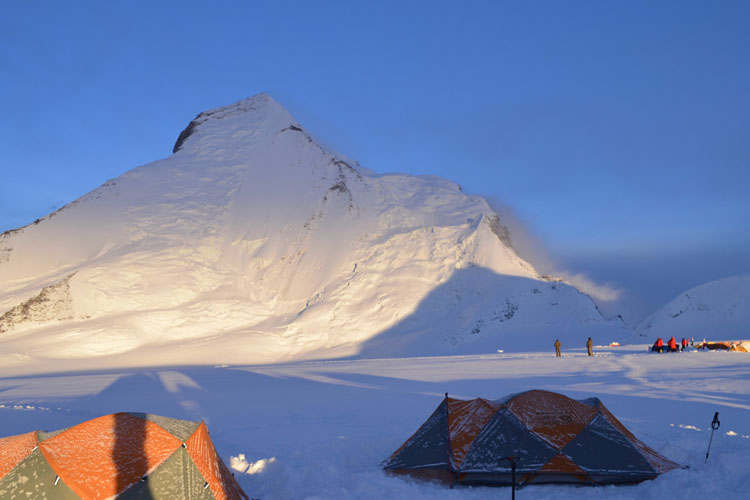
It is important to note that different routes and expedition may have different camps, The above is the general layout.
Travel Tips
Nun Peak is a challenging and remote destination, and it’s important to be well-prepared and to plan your trip carefully. Here are a few travel tips to help guide your trip:
Obtain Permissions: Access to the peak is restricted, and climbing it requires permission from the Indian government. Be sure to obtain all necessary permits and permissions before embarking on your trip.
Hire a guide: Hiring a guide can be beneficial, especially if you’re new to the area or if you’re not familiar with the route. Guides can provide valuable information about the local conditions and hazards, and can help you navigate the terrain.
Plan your route: Make sure you have a detailed plan of the route, including maps, GPS coordinates, and emergency contact information.
Pack appropriately: Make sure you bring all the necessary gear and equipment, including warm and waterproof clothing, a good quality sleeping bag, a camping mat, and a tent.
Respect the environment: Nun Peak is located in a protected area, so be sure to respect the local environment and leave no trace.
Be aware of altitude sickness: Altitude sickness can occur when climbing to high elevations. Be aware of the symptoms and take necessary precautions to avoid it.
Be flexible: Be prepared to change your plans if necessary. Weather conditions and other factors may make it impossible to reach the summit, so be prepared to adjust your plans accordingly.
Be prepared for emergencies: Make sure you carry a first aid kit and a satellite phone or a high-frequency radio for communication.
It’s also worth noting that you should always check with local authorities, guides, and tour operators for any additional recommendations or requirements specific to the peak and the season.
Nun Peak – FAQ
What is the best time to climb Nun Peak?
The best time to climb Nun Peak is from June to September, during the monsoon season. The monsoon season offers the best weather conditions and the least amount of snow on the mountain.
What kind of equipment is required for climbing Nun Peak?
Climbing Nun Peak requires basic mountaineering equipment, such as crampons, ice axe, harness, helmet, carabiners, slings, and other personal climbing equipment. Additionally, warm clothing, a good sleeping bag, and a good camping tent are also important.
Do I need any special permit to climb Nun Peak?
Climbing Nun Peak does not require any special permits. However, you will need to register with the Indian Mountaineering Foundation (IMF) and pay a fee to cover the cost of rescue and other services.
How difficult is the climb?
Nun Peak is considered a challenging climb due to its high altitude and the steep terrain. It requires experience in ice and snow climbing, as well as the use of crampons and ice axes. It is recommended to hire a guide or join a guided expedition.
Can I reach the peak without previous climbing experience?
It is not recommended to attempt to climb Nun Peak without previous climbing experience. It is a challenging mountain and requires proper training, equipment, and experience to climb safely.
How long does it take to reach the summit of Nun Peak?
The ascent to the summit of Nun Peak usually takes around 10-15 days, depending on the weather conditions and the pace of the climbers.
Is there any medical facilities around?
There are no medical facilities on the mountain, so it is important to be prepared for any emergency situations. Guides will carry a first aid kit and will be trained to deal with altitude sickness and other common climbing injuries.
- Shikhar Travels offers fixed departure to Nun Peak Expedition
We have recently scaled Tatakutti Peak on 27 August 2023 with a group of 6 person with the peak elevation of 476060 mtrs and we want to climb Nun kun
Please answer us
Hello Ahmed, please send WhatsApp msg on this number 9717891140
Ok